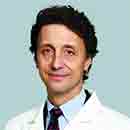On Nutrition: Behind the news on whole dairy foods
Published in Nutrition
One of my first jobs as a registered dietitian was with the School Food Service Program in Santa Fe, New Mexico. I helped educate schools on nutrition guidelines and traveled around the state to evaluate school feeding programs according to USDA regulations.
That was before 2012 when Congress passed legislation to eliminate whole and reduced-fat (2%) milk in school meals. The intent was admirable — to reduce obesity and other health risks in kids by cutting saturated fat and calories from their milk.
So why the current push to add whole and reduced-fat milk back to the National School Lunch Program? In part, I suspect it’s based on research over the past decade or so that has changed our knowledge about how foods (such as dairy products) exert their effects on our health.
In particular, scientists now recognize that the healthfulness of a food is not simply due to its individual nutrients (such as saturated fat). Instead, the health impact of a food depends on its thousands of components and how they interact.
Since much of this research has been propelled by what scientists have learned about dairy foods, they now refer to the unique structure and interaction of compounds in these foods as the “dairy matrix.”
To complicate it even more, as milk is processed into cheese, yogurt and other products, it’s matrix changes. And so do its health effects.
So what does this mean in terms of whole or reduced-fat milk, which have more saturated fat than lower fat versions? A 2025 review on this topic in Critical Reviews in Food Science and Nutrition came to some interesting conclusions: “A growing body of research indicates that whole dairy foods such as whole milk, yogurt and cheese tend to have either protective or neutral effects on cardiometabolic health.”
That means that dairy foods made with whole milk do not appear to worsen our risk for heart disease or metabolic diseases such as Type 2 diabetes. And they may actually help protect against these diseases. Fascinating.
This isn’t to say that low-fat and nonfat foods are a thing of the past. The proposed regulation for the school lunch program is to give students the option to choose whole or reduced-fat milk in addition to the current nonfat and low-fat selections.
Still, experts are commending the distinct nutritional profile and bioactive composition of whole dairy foods. Perhaps this will encourage us to remember the goal of 3 daily servings of a variety of dairy foods each day.
©2025 MediaNews Group, Inc. Distributed by Tribune Content Agency, LLC.










Comments